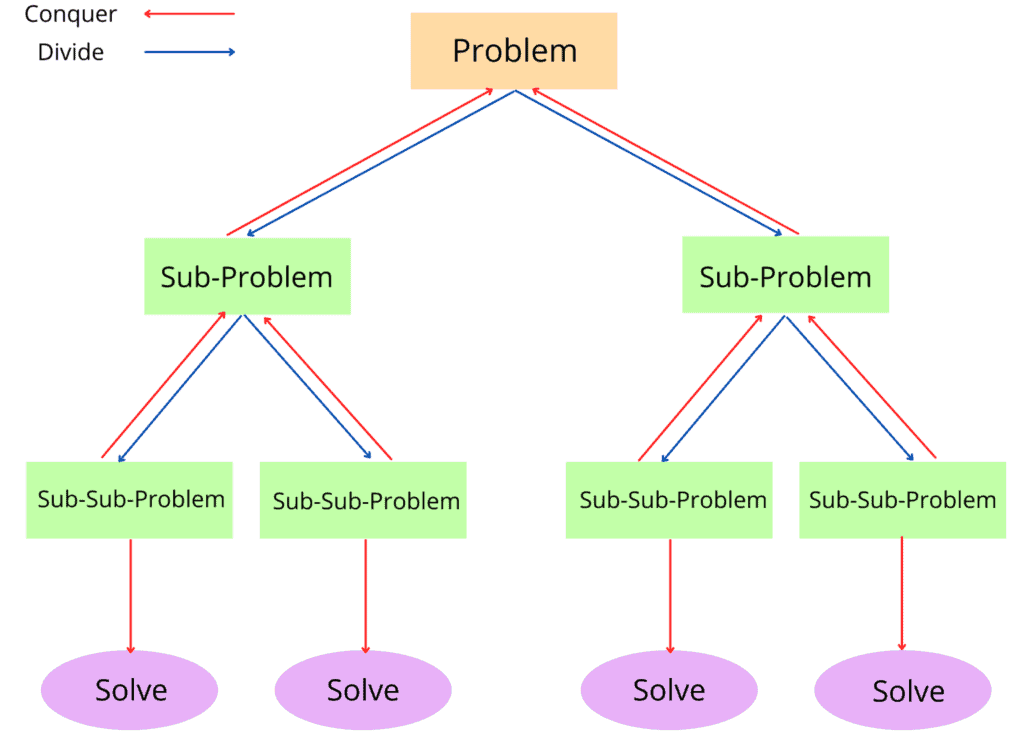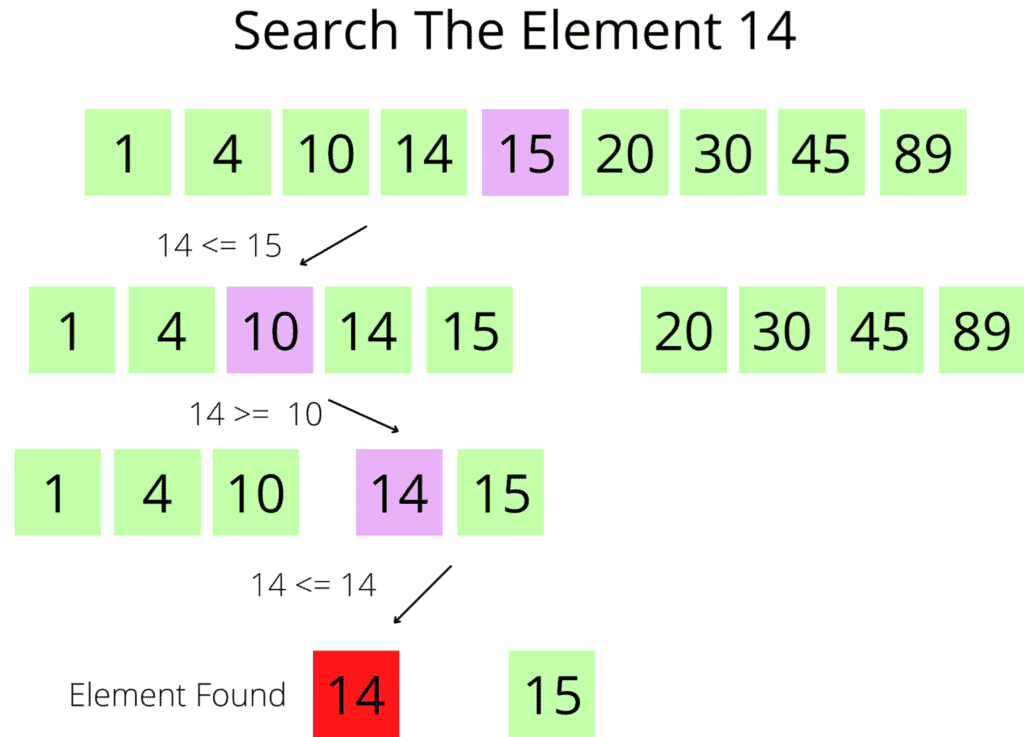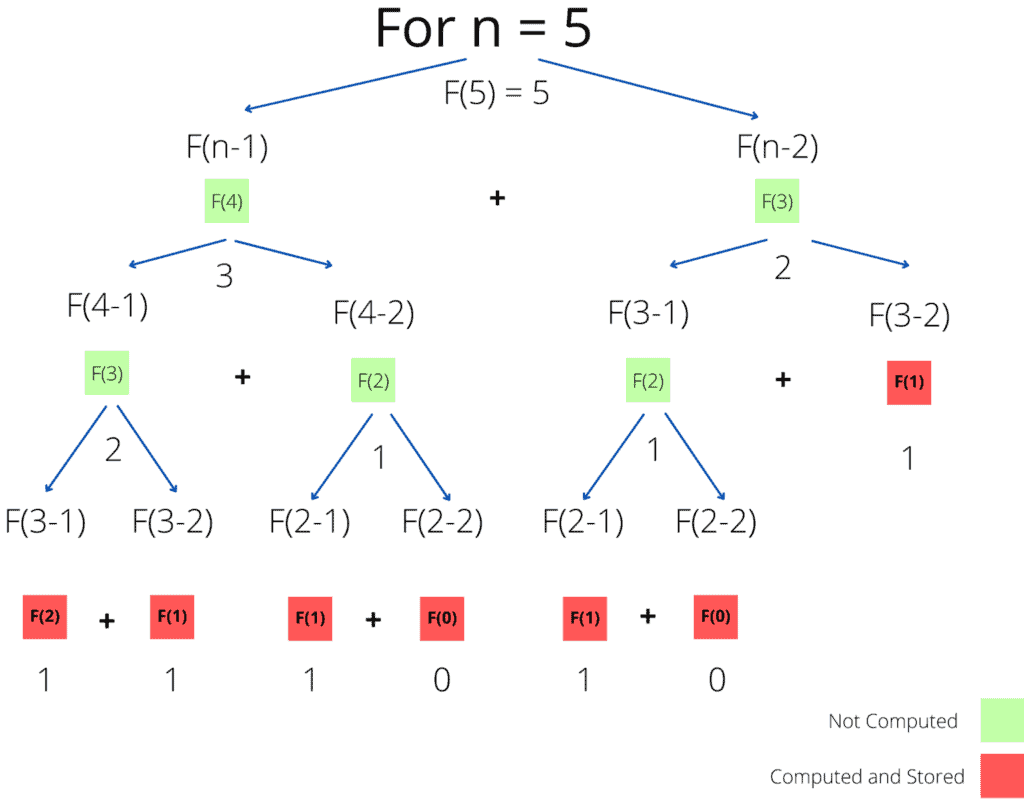1. 概述
在本篇教程中,我们将深入探讨两种非常流行的算法设计范式:分治法(Divide and Conquer) 和 动态规划(Dynamic Programming)。
我们会先介绍它们的基本思想,然后分别通过一个经典示例来说明其工作原理,最后总结它们之间的核心差异。
2. 分治法的基本思想
分治法的核心思想是:将一个复杂的问题分解为若干个规模较小的子问题,分别求解这些子问题,最后将子问题的解合并,得到原问题的解。
整个过程通常分为三个阶段:
- 分解(Divide):将原问题拆解为若干个子问题。
- 求解(Conquer):递归地求解各个子问题。
- 合并(Combine):将子问题的解合并为原问题的解。
下图展示了分治法的执行流程:

分治法通常能显著降低算法的时间复杂度,是许多高效算法的基础。
3. 分治法的示例:二分查找
一个典型的分治法应用是 二分查找(Binary Search)。我们来看它的实现逻辑。
问题描述
给定一个有序数组,我们需要查找某个目标值是否存在于该数组中。如果存在,返回 true,否则返回 false。
分治思路
- 将数组一分为二;
- 判断目标值位于哪一半;
- 递归地在该半部分中继续查找;
- 直到找到目标值或确定不存在。
示例图解
下图展示了查找值 14 的过程:

可以看到,我们不需要遍历整个数组,只需要访问其中一部分元素,因此时间复杂度为 O(log n)。
Java 示例代码
public boolean binarySearch(int[] arr, int target, int left, int right) {
if (left > right) return false;
int mid = left + (right - left) / 2;
if (arr[mid] == target) {
return true;
} else if (arr[mid] < target) {
return binarySearch(arr, target, mid + 1, right);
} else {
return binarySearch(arr, target, left, mid - 1);
}
}
✅ 优点:代码简洁,效率高
❌ 限制:必须保证数组是有序的
4. 动态规划的基本思想
动态规划也是一种将大问题分解为子问题的策略,但与分治法不同的是,子问题之间存在重叠(Overlapping Subproblems)。
动态规划的关键在于:
- 状态定义:明确每个子问题的含义
- 状态转移方程:找出子问题之间的关系
- 记忆化(Memoization)或表格化(Tabulation):保存子问题的解,避免重复计算
它通常用于求解最优化问题,例如最长公共子序列、背包问题等。
5. 动态规划示例:斐波那契数列
一个经典的动态规划问题是 斐波那契数列(Fibonacci Sequence)。
问题描述
斐波那契数列定义如下:
$$ F(n) = F(n-1) + F(n-2) $$ 初始值为: $$ F(0) = 0, \quad F(1) = 1 $$
分治法 vs 动态规划
使用普通的递归(分治)实现会存在大量重复计算:
int fib(int n) {
if (n <= 1) return n;
return fib(n - 1) + fib(n - 2);
}
时间复杂度高达 O(2^n),效率极低。
而使用动态规划可以避免重复计算:
动态规划实现(表格法)
int fib(int n) {
if (n <= 1) return n;
int[] dp = new int[n + 1];
dp[0] = 0;
dp[1] = 1;
for (int i = 2; i <= n; i++) {
dp[i] = dp[i - 1] + dp[i - 2];
}
return dp[n];
}
图解执行流程

✅ 优点:时间复杂度降至 O(n),空间复杂度 O(n)(可进一步优化为 O(1))
⚠️ 注意:不要直接使用递归,否则效率极低
6. 分治法 vs 动态规划:对比总结
| 特性 | 分治法 | 动态规划 |
|---|---|---|
| 是否递归 | ✅ 多数为递归 | ❌ 多数为非递归(表格法) |
| 子问题是否重叠 | ❌ 独立 | ✅ 重叠 |
| 是否保存子问题结果 | ❌ 不保存 | ✅ 保存 |
| 时间复杂度 | ⏱️ 通常较高 | ⏱️ 通常较低 |
| 应用场景 | 排序、查找等 | 最优化问题(如最长子序列、背包问题) |
7. 总结
虽然分治法和动态规划在思想上有相似之处,但它们在实现机制和适用场景上有显著差异:
- ✅ 分治法适用于子问题相互独立、结构相似的问题,如排序、查找;
- ✅ 动态规划适用于子问题重叠且存在最优子结构的问题,如最优化问题、组合问题;
- ⚠️ 选择哪种方法取决于问题的性质和子问题之间的关系;
- ❗ 在实际开发中,务必根据问题特征选择合适策略,避免“为用而用”。
在算法设计中,理解这两种范式的本质,能帮助我们写出更高效、更优雅的代码。